Cervical insufficiency, previously termed an incompetent cervix or premature dilation of the cervix, refers to a cervix that dilates prematurely and therefore cannot retain a fetus until term. The dilatation usually occurs painlessly, so often, the first symptom is a show (a pink-stained vaginal discharge) or increased pelvic pressure, which then is followed by rupture of the membranes and discharge of the amniotic fluid. Uterine contractions begin, and after a short labor, the fetus is born. Unfortunately, this commonly occurs at approximately week 20 of pregnancy, when the fetus is still too immature to survive.
Risk factors of cervical insufficiency include congenital factors such as congenital diethylstilbestrol exposure, uterine malformation, collagen abnormality, collagen vessel loss, and Mullerian abnormality; acquired factors include a previous history of mid-trimester pregnancy loss or preterm birth, as well as uterine cavity surgery requiring cervical dilatation, such as evacuation and curettage. Cervical lacerations caused by childbirth or induced abortion also play a role in the risk of cervical insufficiency (Han et al., 2020).
The treatment of cervical insufficiency mainly includes surgical and nonsurgical treatment options. Surgical treatment is through cervical cerclage, while non-surgical treatment mainly includes vaginal progesterone and cervical pessary (Han et al., 2020).
Nursing Care Plans and Management
Cervical insufficiency is associated with repeated second-trimester spontaneous abortions and accounts for 15% to 20% of second-trimester pregnancy losses. The nurse’s plan of care should be to alleviate anxiety, provide emotional support, and provide information to the client or couple.
Nursing Problem Priorities
The following are the nursing priorities for patients with cervical insufficiency (incompetent cervix):
- Preterm labor prevention: Implementing strategies to delay or prevent preterm labor and birth.
- Cervical cerclage evaluation. Assessing the need for cervical cerclage placement to provide additional support to the cervix.
- Monitoring cervical length. Regularly measuring cervical length to identify any changes or signs of cervical insufficiency.
- Infection control. Managing and preventing infections that can increase the risk of cervical insufficiency.
- Patient education. Providing comprehensive education to patients about cervical insufficiency, its symptoms, and the importance of adherence to recommended treatments and precautions.
- Emotional support. Offering emotional support and counseling to patients dealing with the anxiety and stress associated with cervical insufficiency.
- Fetal monitoring. Regular monitoring of fetal well-being to ensure early detection of any potential complications.
- Maternal health management. Addressing and managing any underlying maternal health conditions that may contribute to cervical insufficiency.
Nursing Assessment
Assess for the following subjective and objective data:
- See nursing assessment cues under Nursing Interventions and Actions.
Nursing Diagnosis
Following a thorough assessment, a nursing diagnosis is formulated to specifically address the challenges associated with insufficiency (incompetent cervix) based on the nurse’s clinical judgment and understanding of the patient’s unique health condition. While nursing diagnoses serve as a framework for organizing care, their usefulness may vary in different clinical situations. In real-life clinical settings, it is important to note that the use of specific nursing diagnostic labels may not be as prominent or commonly utilized as other components of the care plan. It is ultimately the nurse’s clinical expertise and judgment that shape the care plan to meet the unique needs of each patient, prioritizing their health concerns and priorities.
Nursing Goals
Goals and expected outcomes may include:
- The client will verbalize understanding of her own circumstances and treatment.
- The client will demonstrate self-care behavior to maintain pregnancy.
- The client will verbalize understanding of individual risk factors or conditions that may impact pregnancy.
- The client will engage in necessary alterations in lifestyle and daily activities to manage risks.
- The client will identify signs and symptoms requiring medical intervention or evaluation.
- The client will display fetal growth within normal limits and carry the pregnancy to term.
- The client will appear relaxed and report anxiety is reduced to a manageable level.
- The client will verbalize awareness of feelings of anxiety.
- The client will identify healthy ways to deal with and express anxiety.
- The client will demonstrate problem-solving skills.
- The client will indicate an understanding of individual risk factors.
- The client will identify interventions to prevent or reduce the risk of infection.
- The client will maintain normothermia and be free from signs of infection.
Nursing Interventions and Actions
Therapeutic interventions and nursing actions for patients with insufficiency (incompetent cervix) may include:
1. Initiating Patient Education and Health Teachings
The knowledge provided during prenatal care is of paramount importance, bestowing confidence, informed decision-making, reduction of stress, and the ability to manage a healthy pregnancy while understanding and recognizing situations that require medical attention, as an informed choice is a choice that is based on the availability of relevant and balanced information (Ratzon et al., 2022). Threat to the well-being of the maternal-fetal dyad in the gestational period arises from several clinical, obstetric, and social conditions that can cause maternal and/or fetal complications and compromise their outcome. A pregnancy that occurs with complications corresponds to 20% of the total pregnancies and is called high-risk. Due to the unexpected conditions associated with pregnancy, there is a real or potential risk to the health and well-being of the mother and/or the child (Gomes et al., 2020). Cervical insufficiency is one of the important causes of recurrent abortion, a rare condition affecting about 1% of couples attempting to conceive (Han et al., 2020).
Determine the level of the client’s knowledge.
This provides an opportunity to clarify previously learned, identify cultural myths, and correct misconceptions. The key components for informed decision are that the individual has adequate knowledge, makes a decision consistent with their attitudes, values, and preferences, and ultimately enacts their decision (Ratzon et al., 2022).
Assess the degree of anxiety.
Anxiety can interfere with the learning process. Significant perinatal anxiety can be serious enough to interfere with relationships, the ability to get things done, or recognize the need or may want help to overcome it (Forder et al., 2020).
Involve significant others in the discussion.
This helps reinforce the understanding of the client and family members. Positive interpersonal relationships appear to constitute a supportive network that significantly influences perinatal mental health. The presence of a supportive partner works psycho-protectively against the difficulties and pressures created by the transition to maternity and the occurrence of complications (Antoniou et al., 2021).
Provide information about future expectations.
The client may experience concern about whether difficulties may be encountered. An informed decision is when a choice is made by using relevant information about the advantages and disadvantages of all the possible courses of action. Knowledge is crucial for making an informed decision (Ratzon et al., 2022).
Identify signs and/or symptoms to be reported to the healthcare provider.
Prompt evaluation and intervention may prevent or limit complications. The dilatation usually occurs painlessly, so often, the first symptom is the show (pink-stained vaginal discharge) or increased pelvic pressure. It may be followed by a rupture of membranes and discharge of amniotic fluid.
Encourage the client to participate in group prenatal care.
Group prenatal care allows the healthcare professional and the group participants to share their knowledge and experience. One of the main goals of group care is the provision of knowledge, with the aim of providing the women with an ability to make informed decisions and thereby better preparing women for healthy pregnancy, childbirth, and newborn care (Ratzon et al., 2022).
Arrange for individual prenatal care if preferred by the client.
Group care may not be suitable for all women. Participating in a group session involves sharing information and asking questions in the presence of others, which may be uncomfortable for certain women (Ratzon et al., 2022).
Educate the client about the possible procedures to prevent another pregnancy loss.
Informing the client helps her understand how her pregnancy can be saved and allows her to make an informed decision about her current situation. After the loss of one child because of cervical insufficiency, a surgical operation termed cervical cerclage can be performed to prevent this from happening in a second pregnancy. A McDonald or a Shirodkar procedure (purse-string sutures placed in the cervix by the vaginal route under regional anesthesia) can be done after an ultrasound confirms that the fetus is healthy and approximately weeks 12 to 14.
Instruct the client about her activities after a cerclage surgery.
After cerclage surgery, the client may remain on bed rest (in a slight or modified Trendelenburg position) for a few days to decrease pressure on the new sutures. Usual activity and sexual relations can be resumed in most instances after this rest period.
Instruct the client about the removal of cerclage and report unusual signs and symptoms that may indicate sepsis or premature labor.
The cerclage is generally removed electively at 36 to 38 weeks of gestation. Removal can usually be performed without anesthesia or with only short-acting narcotics. The onset of premature labor unresponsive to tocolysis and/or strong suspicion of sepsis are indications for emergency removal of the cerclage (Brown et al., 2019).
Educate the client about smoking cessation and refer her to support programs.
A pregnant client who is still actively smoking during the perinatal period should be informed about the effects of smoking. Smoking status was found to be closely linked to spontaneous preterm birth. Smoking also had an additive effect in clients with a shortened cervix by transvaginal ultrasound, further increasing the risk of spontaneous preterm birth in these clients (Findley et al., 2015).
Review history of previous pregnancies.
The classic history that raises the suspicion of cervical insufficiency is that of recurrent mid-trimester pregnancy losses. A previous preterm pre-labor rupture of membranes at less than 32 weeks should be noted, as should a prior pregnancy with a cervical length measurement of less than 25 mm prior to 27 weeks of gestation (Brown et al., 2019).
Obtain a history of prenatal screening and the amount and timing of care.
Lack of prenatal care can place both mother and fetus at risk. Accordingly, if the disease is not diagnosed and treated, the possibility of the client naturally maintaining pregnancy to full term after another pregnancy is slim (Han et al., 2020).
Note conditions potentiating the condition.
Any history of cervical trauma should be noted. A risk factor reducing incidence is that of the mother herself having been exposed to diethylstilbesterol in utero. A variety of other maternal risk factors include the presence of a congenital uterine anomaly or a maternal connective tissue disease or abnormality that affects the integrity of normal collagen development and function. Recently, polycystic ovarian syndrome has been suggested as a risk factor for cervical insufficiency (Brown et al., 2019).
Note the client’s maternal age.
Maternal age is the strongest known risk factor for miscarriages. The risk of miscarriage is slightly elevated in the youngest mothers and rises sharply in older mothers. The risk is moderately increased (15.8%) for women under the age of 20, with the absolute lowest risk (9.5%) at age 27, and then rising nearly linearly after the age of 30 to reach 54% at ages 45 and over (Magnus et al., 2019).
Investigate the client’s current home situation and screen for abuse during pregnancy.
The client may have a history of unstable relationships or inadequate/lack of housing that affects safety as well as general well-being. Prenatal abuse is correlated with preterm delivery and premature dilation of the cervix. Researchers have demonstrated an increased risk for pregnancy-related health conditions such as pelvic pain, cervical insufficiency, preterm birth, and low birth weight associated with childhood experiences of sexual violence (Ward, 2020).
Instruct the client on reportable symptoms and monitor for unusual symptoms at each prenatal visit.
This provides an opportunity for early intervention in event of developing complications. Cervical insufficiency is most classically associated with painless, progressive dilatation of the uterine cervix in the second or early trimester, resulting in membrane prolapse, premature rupture of membranes, mid-trimester pregnancy loss, or preterm birth (Brown et al., 2019).
Facilitate positive adaptation to situations through active listening, acceptance, and problem-solving.
This helps in the successful accomplishment of the psychological tasks of pregnancy.
Review changes in medication regimen.
Prepregnancy treatment for maternal conditions may require alteration for maternal and fetal safety. The American College of Obstetricians and Gynecologists (ACOG) advocates vaginal progesterone be used as a management option so as to reduce the risk of preterm birth in asymptomatic women with no history of preterm birth and who had an incidental discovery of cervical length <20 mm, but does not recommend routine progesterone treatment after cerclage (Han et al., 2020).
Encourage modified or complete bed rest as indicated.
Activity level may need modification depending on symptoms of uterine activity and cervical changes. Consider advising the client to reduce physical activity, especially those with physical employment, prolonged periods of standing, or frequent and repetitive lifting, although there are no data to confirm or deny the efficacy of bed rest in such cases (Brown et al., 2019).
Position the client in a Trendelenburg position during bed rest. Insert a Foley balloon into the cervix.
Bed rest with a Trendelenburg position may further help reduce bulging membranes and facilitate suture placement, as may using a Foley balloon inserted into the cervix and then inflated to mechanically reduce the membranes Position the client in a Trendelenburg position during bedrest (Brown et al., 2019).
Emphasize the normalcy of pregnancy, focus on pregnancy milestones, and “countdown to birth.”
This promotes a sense of hope that modifications or restrictions serve a worthwhile purpose. Cervical insufficiency may have a negative impact on the emotions of pregnant women. Individualized and targeted mental health care should be added to clinic work to prevent negative outcomes (Wu et al., 2022).
Discuss the implications of a preexisting condition and its possible impact on pregnancy.
Pregnancy may have no effect or may reduce or exacerbate the severity of symptoms of chronic conditions. Researchers found that high levels of serum relaxin are independent risk factors for cervical insufficiency and may hold predictive value. Additionally, The Society of Obstetricians and Gynecologists of Canada (SOGC) guidelines explain that polycystic ovary syndrome (PCOS) is an independent risk factor, while the Royal College of Obstetrics and Gynecology (RCOG) believes that having multiple pregnancies is also a risk factor. Uterine malformation and collagen abnormality also contribute to cervical insufficiency (Han et al., 2020).
Provide information and answer the client’s concerns appropriately.
Recurrent abnormal pregnancies and the increasing maternal age can cause great psychological pressure on clients diagnosed with cervical insufficiency in their daily lives and their next pregnancies. In a study, a WeChat group was established and professional doctors answer relevant questions and conduct health education for the group of women diagnosed with cervical insufficiency, so as to relieve the anxiety and depression of the women during pregnancy. Cervical insufficiency may affect the emotions of pregnant women, and poor psychological states may threaten maternal and infant health (Wu et al., 2022).
Assist in ultrasonography as indicated.
Ultrasound cervical length assessment will identify a cohort that is at increased risk of further pregnancy loss or preterm delivery. A serial transvaginal ultrasound should be performed every 7 to 14 days from 16 weeks of gestation or at least two weeks prior to the gestational age of the earliest preceding pregnancy loss (Brown et al., 2019).
Prepare the client for amniocentesis, as indicated.
Amniocentesis may have a greater role to play in emergency cerclage than in prophylactic cerclage. The first potential benefit in emergency cases is identifying those women who may not benefit from cerclage, based upon evidence of infection or on a more complex evaluation of proteomic markers that investigates function infection as well as other factors. Additionally, removing a larger volume of amniotic fluid permits bulging membranes to withdraw into the cervix by reducing intrauterine pressure and thereby facilitating cerclage placement (Brown et al., 2019).
Assist in prophylactic transvaginal cerclage as indicated.
Consider elective cerclage if there appears to be a high risk of cervical insufficiency based on the client’s obstetric history. The level of risk is typically determined by identifying and assessing the significance of the risk factors. Clients with a history of three or more second-trimester pregnancy losses or extreme premature deliveries, in whom no specific cause other than potential cervical insufficiency is identified, should be offered elective cerclage at 12 to 14 weeks of gestation (Brown et al., 2019).
Administer corticosteroids as appropriate before removal of cerclage.
Meta-analysis has shown an increased neonatal mortality rate with the delayed removal of cerclage, with sepsis as the principal cause; therefore, a policy of removal within 48 hours (allowing time for corticosteroid administration if appropriate) is advocated (Brown et al., 2019).
Administer indomethacin as ordered.
The administration of a course of indomethacin prior to cerclage placement might reduce protruding membranes through its effect on reducing fetal urine production (thereby reducing intrauterine pressure) and through its tocolytic value (Brown et al., 2019).
2. Reducing Anxiety
During the pregnancy period, women would obtain great changes not only in their physiological but also in their psychological states. Previous studies demonstrated that up to 11.9% of pregnant women could be diagnosed with depression, while 22.9% of pregnant women suffer from anxiety. Since pregnant women can build a deep relationship with their babies by fetal heartbeat and fetal movement during the second trimester, pregnancy loss at this stage can cause grave damage. Depression and anxiety disorders during pregnancy can lead to serious consequences for women, infants, and also their families (Wu et al., 2022).
Assess the client’s level of anxiety.
Determine the client’s level of anxiety using the Self-rating Anxiety Scale (SAS) and Self-rating Depression Scale (SDS). Many published studies had demonstrated the good psychometric property and validity of both SAS and SDS. Both consist of 20 items with four Likert levels. In a study, a comparison of SAS and SDS scores found that the depression of pregnant women with cervical insufficiency was improved with the increase of gestational age, but the anxiety continued throughout the pregnancy period (Wu et al., 2022).
Review physiological or psychological factors.
These factors can cause or exacerbate anxiety. These concerns or psychological issues will be recycled every time trauma is experienced and affect how the client views the current situation. A study found that among pregnant women diagnosed with cervical insufficiency, a history of abnormal pregnancy or delivery was the main factor influencing anxiety and depression in the first and second trimesters (Wu et al., 2022).
Monitor vital signs, especially blood pressure.
Anxiety occurs when the body releases stress hormones. These hormones also trigger an increase in the heart rate and a narrowing of the blood vessel. These changes can cause the client’s blood pressure to increase (Lener & Legg, 2021).
Observe the client’s behaviors. Note the degree of disorganization.
The client may be unable to handle activities of daily living (ADLs) or work requirements and may need more intensive evaluation and intervention. Spontaneous abortion, as a major negative event in life, may increase the psychological burden of the client, reduce their interest in other activities in their life, and form a barrier to contact with society, thus leading to their interpersonal tension and indifference, lowering their self-esteem, and increasing their frustration, loneliness, and guilt (Wu et al., 2022).
Review obstetric history.
Studies have shown that unwilling pregnancy termination before 28 weeks of gestation, which often happen in clients suffering from cervical insufficiency, could lead to adverse mental health consequences. In the second and third trimesters, as the feelings between the mothers and their babies become stronger, the history of abnormal pregnancy may increase the mother’s psychological burden (Wu et al., 2022).
Determine coping skills used in the past.
Explore with the client the manner in which she has coped with anxiety-producing events before the current situation. This may help the client regain a sense of control and recognize the significance of the trauma.
Assess psychological indicators of anxiety: BP, pulse, respiratory rate, diaphoresis, and so on.
Psychological changes in vital signs may have a psychological origin. Physical problems need to be differentiated from anxiety. Physical symptoms such as numbness, headache, or tightness of the chest. Psychological responses include anger, shock, acute anxiety, panic, confusion, and denial.
Develop a trusting relationship with the client.
Trust is the basis of a therapeutic nurse-client relationship and enables them to work together effectively. Clients may be more likely to be honest if they feel secure and comfortable with their healthcare provider and their setting. Those women who were least likely to respond honestly or felt the greatest discomfort were also identified as being at increased risk of both perinatal depression and anxiety (Forder et al., 2020).
Convey empathy and unconditional positive regard.
The client needs to be reassured that disclosure and the possible emotional distress involved in disclosing will be of value to them and their family and not a further time and stress burden. The client also needs reassurance about confidentiality and to feel that they are not being judged. The client may judge herself critically and is concerned with how others would judge her, especially if she admitted that she is struggling emotionally with motherhood (Forder et al., 2020).
Provide accurate information about the situation.
Women in a study were very clear about when and where they felt safe and were able to reveal concerns regarding their emotional health. Conflicting advice from health professionals is found to impact trust in health services (Forder et al., 2020). Provide frequent updates about the client’s progress to help minimize fear due to the unknown.
Promote comfort measures and relaxation techniques.
Help the client to use relaxation techniques and comfort measures, such as muscle relaxation, breathing, and music. Relaxation techniques help to decrease anxiety and fear, enhancing feelings of control. Therapeutic touch and massage may work because they serve as forms of distraction. Concentrating intently on an object is another method of distraction referred to as focusing.
Avoid making judgments and accept the client unconditionally.
The client may need to be where she is at this point in time. The client may be concerned about being negatively labeled and the social stigma associated with depression and anxiety, resulting in a strong determination to portray that everything is fine (Forder et al., 2020).
Allow the behavior to belong to the client; do not respond personally.
The nurse may respond inappropriately, escalating the situation to a nontherapeutic interaction. Health practitioners should be aware that a significant proportion of women may not be forthcoming about their own distress and that these women appear to be at particular risk for perinatal mental health problems. A non-judgmental, open, and reassuring approach may help to reduce the stigma and fears contributing to the lack of honest responses and improve early diagnosis and treatment of mental health problems (Forder et al., 2020).
Assist the client with anxiety in coping with the situation.
Moderate anxiety heightens awareness and permits the client to focus on dealing with problems. Women in a study acknowledged that they were not feeling emotionally strong during the perinatal period, but they assumed it would “pass quickly” and was part of the motherhood experience, that they should be able to cope and that it was ‘expected’ for mothers. Some thought their issues were not serious enough, while others reported not having time to delve into their problems (Forder et al., 2020).
Engage the client in learning new coping behaviors, such as progressive muscle relaxation and thought stopping.
Replacing maladaptive behaviors can enhance the ability to manage and deal with stress. Interrupting obsessive thinking allows the client to use energy to address underlying anxiety, while continued rumination about the situation can actually retard recovery.
Encourage the client to develop an activity program.
This may serve to reduce the level of anxiety by relieving tension. Complementary and alternative therapies may help the client relax and decrease the anxious feelings, such as acupressure, focusing and imagery, breathing techniques, reflexology, and yoga and meditation.
Identify the client’s perception of the threat represented by this occurrence.
The ambiguity of the outcome aggravates anxiety. The client fears losing their child again and is swayed by considerations of gain and loss. This is bad for their physical and mental health. Even the slightest hint may make the client nervous. In a study, most pregnant women came for help after several spontaneous abortions. They had been under negative psychological stimulation for a long time, so they are eager to get pregnant, but at the same time, they were afraid of losing their babies again (Wu et al., 2022).
Provide positive feedback when the client manages anxiety in better ways and can appraise their current situation calmly and realistically.
This provides acknowledgment and reinforcement, encouraging the use of new coping strategies. Positive feedback also enhances the ability to deal with fearful feelings and gain control over the situation, promoting future successes.
Determine the availability of support systems and psychological responses to the event.
The degree of negative response and lack of or inadequacy of support contributes to heightened anxiety levels, possibly affecting the overall outcome. High-risk pregnant women manage their emotions mainly through deep motion work. Social support and optimism contribute to their emotional coping.
Arrange for continuity of care and follow-up.
Continuity of care and follow-up screening is important in building a relationship of trust between client and practitioner. Other studies report that continuity of care may enhance the uptake of perinatal mental health services, with women more likely to engage in treatment if they receive continuity of care. Continuity in care allows for a relationship of trust to be established, providing ongoing opportunities for openness, reflection, counseling, and intervention (Forder et al., 2020).
3. Preventing Infections
Intra-amniotic infection ascertained by amniocentesis has been reported in 8-52% of clients presenting with cervical insufficiency. Goodlin reported that 22.2% of clients diagnosed with cervical insufficiency had microorganisms in the amniotic cavity. Some of these clients had cervical cancer because the amniotic fluid Gram stain results were negative. Intra-amniotic inflammation has been associated with preterm delivery as well as adverse pregnancy and neonatal outcomes. The prognosis of clients with cervical insufficiency and intra-amniotic inflammation is poor, with 50% delivering within seven days; in 84% of cases, clients had a preterm delivery (Oh et al., 2019).
Monitor vital signs, including temperature.
These parameters provide baseline information and data to track the changes in the client’s body. Frequent temperature elevations or the onset of a new fever may indicate that the body is responding to a new infectious process or that medications are not effectively controlling the infection.
Asses for physical symptoms of infection.
An infection can be dangerous for both the mother and the fetus. Uterine tenderness and an odorous vaginal discharge are signs of infection that should be reported urgently to prevent ascending infection.
Review the client’s laboratory values.
The white blood cell count will need to be assessed frequently. A count of more than 18,000 to 20,000/mm³ suggests an infection, especially if the count is increasing over serial blood draws.
Inform the client to avoid activities that can introduce infection into the cervix.
The client should refrain from tub bathing, douching, and coitus because of the danger of introducing an infection. Douching can introduce new bacteria into the vagina, spreading up through the cervix, uterus, and fallopian tubes. Tub baths are a reservoir for bacteria that may enter the cervical canal and cause an ascending infection.
Inform the client about reportable symptoms that may indicate infection.
After a cervical cerclage procedure, be certain to ask if the client has a thermometer and provide specific instructions regarding what degree of temperature she should report and if she understands the bed rest expected of her. Help her understand the signs and symptoms of infection so her WBC count can be assessed as necessary.
Demonstrate and encourage good hand hygiene techniques.
Hand hygiene is a very effective means of reducing the spread or acquisition of infection. Use good hand hygiene techniques before, during, and after any client care to prevent cross-contamination.
Ensure sterility of items used during aseptic procedures and implement infection precautions.
To help prevent infection, any articles such as gloves or instruments that are introduced into the cervical canal should be sterile. In addition, adherence to standard infection precautions is essential.
Instruct the client with proper perineal care.
Be certain to instruct the client in proper perineal care, including wiping from front to back so that she does not bring E. coli organisms forward from the rectum. When admitted, the client should have her own perineal care supplies and should not share them to prevent the transfer of pathogens from one client to another.
Assist in acquiring amniotic fluid as a specimen for culture.
Amniotic fluid is cultured for aerobic and anaerobic bacteria as well as genital mycoplasmas. In a study, 51.5% of clients with cervical insufficiency had a positive amniotic fluid culture for microorganisms (Oh et al., 2019).
Administer antibiotics as indicated.
Antibiotic administration was effective in treating intra-amniotic inflammation, even when microorganisms were not detectable. Metronidazole is used because of its powerful effect against anaerobic bacteria, which are frequently implicated in intr-amniotic infection. Ceftriaxone is included because of its enhanced coverage of aerobic bacteria and high rate of transplacental passage.
Recommended Resources
Recommended nursing diagnosis and nursing care plan books and resources.
Disclosure: Included below are affiliate links from Amazon at no additional cost from you. We may earn a small commission from your purchase. For more information, check out our privacy policy.
Ackley and Ladwig’s Nursing Diagnosis Handbook: An Evidence-Based Guide to Planning Care
We love this book because of its evidence-based approach to nursing interventions. This care plan handbook uses an easy, three-step system to guide you through client assessment, nursing diagnosis, and care planning. Includes step-by-step instructions showing how to implement care and evaluate outcomes, and help you build skills in diagnostic reasoning and critical thinking.

Nursing Care Plans – Nursing Diagnosis & Intervention (10th Edition)
Includes over two hundred care plans that reflect the most recent evidence-based guidelines. New to this edition are ICNP diagnoses, care plans on LGBTQ health issues, and on electrolytes and acid-base balance.

Nurse’s Pocket Guide: Diagnoses, Prioritized Interventions, and Rationales
Quick-reference tool includes all you need to identify the correct diagnoses for efficient patient care planning. The sixteenth edition includes the most recent nursing diagnoses and interventions and an alphabetized listing of nursing diagnoses covering more than 400 disorders.

Nursing Diagnosis Manual: Planning, Individualizing, and Documenting Client Care
Identify interventions to plan, individualize, and document care for more than 800 diseases and disorders. Only in the Nursing Diagnosis Manual will you find for each diagnosis subjectively and objectively – sample clinical applications, prioritized action/interventions with rationales – a documentation section, and much more!

All-in-One Nursing Care Planning Resource – E-Book: Medical-Surgical, Pediatric, Maternity, and Psychiatric-Mental Health
Includes over 100 care plans for medical-surgical, maternity/OB, pediatrics, and psychiatric and mental health. Interprofessional “patient problems” focus familiarizes you with how to speak to patients.

See also
Other recommended site resources for this nursing care plan:
- Nursing Care Plans (NCP): Ultimate Guide and Database MUST READ!
Over 150+ nursing care plans for different diseases and conditions. Includes our easy-to-follow guide on how to create nursing care plans from scratch. - Nursing Diagnosis Guide and List: All You Need to Know to Master Diagnosing
Our comprehensive guide on how to create and write diagnostic labels. Includes detailed nursing care plan guides for common nursing diagnostic labels.
Other care plans related to the care of the pregnant mother and her baby:
- Abortion (Termination of Pregnancy) | 8 Care Plans
- Cervical Insufficiency (Premature Dilation of the Cervix) | 4 Care Plans
- Cesarean Birth | 11 Care Plans
- Cleft Palate and Cleft Lip | 7 Care Plans
- Gestational Diabetes Mellitus | 8 Care Plans
- Hyperbilirubinemia (Jaundice) | 4 Care Plans
- Labor Stages, Induced, Augmented, Dysfunctional, Precipitous Labor | 45 Care Plans
- Neonatal Sepsis | 8 Care Plans
- Perinatal Loss (Miscarriage, Stillbirth) | 6 Care Plans
- Placental Abruption | 4 Care Plans
- Placenta Previa | 4 Care Plans
- Postpartum Hemorrhage | 8 Care Plans
- Postpartum Thrombophlebitis | 5 Care Plans
- Prenatal Hemorrhage (Bleeding in Pregnancy) | 9 Care Plans
- Preeclampsia and Gestational Hypertension | 6 Care Plans
- Prenatal Infection | 5 Care Plans
- Preterm Labor | 7 Care Plans
- Puerperal & Postpartum Infections | 5 Care Plans
- Substance Abuse in Pregnancy | 9 Care Plans
References and Sources
Recommended journals, books, and other interesting materials to help you learn more about cervical insufficiency nursing care plans, and nursing diagnosis:
- Antoniou, E., Stamoulou, P., Tzanoulinou, M.-D., & Orovou, E. (2021, November 18). Perinatal Mental Health; The Role and the Effect of the Partner: A Systematic Review. Healthcare, 9(11).
- Findley, J., Seybold, D. J., Broce, M., Yaday, D., & Calhoun, B. C. (2015, September 04). Transvaginal Cervical Length and Tobacco Use in Appalachian Women: Association with Increased Risk for Spontaneous Preterm Birth. The West Virginia Medical Journal, 111(3), 22-28.
- Forder, P. M., Rich, J., Harris, S., Chojenta, C., Reilly, N., Austin, M.-P., & Loxton, D. (2020, March). Honesty and comfort levels in mothers when screened for perinatal depression and anxiety. Women and Birth, 33(2), e142-e150.
- Gomes, R. C. M., Lopes, M. V. d. O., Albuquerque Perrelli, J. G., Pontes, C. M., Linhares, F. M. P., & Mangueira, S. d. O. (2020). Analysis of the NANDA-I taxonomy “maternal-fetal dyad” concept in high-risk pregnancy: integrative review. Revista Brasileira de Enfermagem, 73(Suppl 4), e20190649.
- Magnus, M. C., Wilcox, A. J., Morken, N.-H., Weinberg, C. R., & Haberg, S. E. (2019, March 20). Role of maternal age and pregnancy history in risk of miscarriage: prospective register based study. BMJ. The BMJ.
- Murr, A. C., Doenges, M. E., & Moorhouse, M. F. (2010). Nursing Care Plans: Guidelines for Individualizing Client Care Across the Life Span. F.A. Davis Company.
- Oh, K. J., Romero, R., Park, J. Y., Lee, J. H., Conde-Agudelo, A., Hong, J.-S., & Yoon, B. H. (2019, August). Evidence that antibiotic administration is effective in the treatment of a subset of patients with intra-amniotic infection/inflammation presenting with cervical insufficiency. American Journal of Obstetrics and Gynecology, 221(2), 140.e1-140.e18.
- Ratzon, R., Cohen, A., Hadar, A., Froimovici, M., & Bilenko, N. (2022, August 26). Impact of Group vs. Individual Prenatal Care Provision on Women’s Knowledge of Pregnancy-Related Topics: An Open, Controlled, Semi-Randomized Community Trial. Journal of Clinical Medicine, 11(17).
- Silbert-Flagg, J., & Pillitteri, A. (2018). Maternal & Child Health Nursing: Care of the Childbearing & Childrearing Family. Wolters Kluwer.
- Wu, Q., Chen, J., Zou, Q., Zeng, X., Yang, Y., Zhou, Y., He, G., Luo, C., & Wu, F. (2022, April 06). An Analysis on the Factors for Cervical Insufficiency Causing Adverse Emotions Among Pregnant Women at Different Gestation Phases. Frontiers in Psychiatry, 13(764345).
- Brown, R., Gagnon, R., & Delisle, M.-F. (2019, February). No. 373-Cervical Insufficiency and Cervical Cerclage. Journal of Obstetrics and Gynaecology Canada, 41(2), 233-247.
- Ward, L.G. (2020, July/September). Trauma-Informed Perinatal Healthcare for Survivors of Sexual Violence. The Journal of Perinatal and Neonatal Nursing, 34(3), 199-202.
- Han, Y., Li, M., Ma, H., & Yang, H. (2020, July 21). Cervical insufficiency: a noteworthy disease with controversies. Journal of Perinatal Medicine, 48(7), 648-655.
- Lener, M. S., & Legg, T. J. (2021, December 22). Anxiety and high blood pressure: Link, differences, and treatment. Medical News Today. Retrieved August 31, 2022.
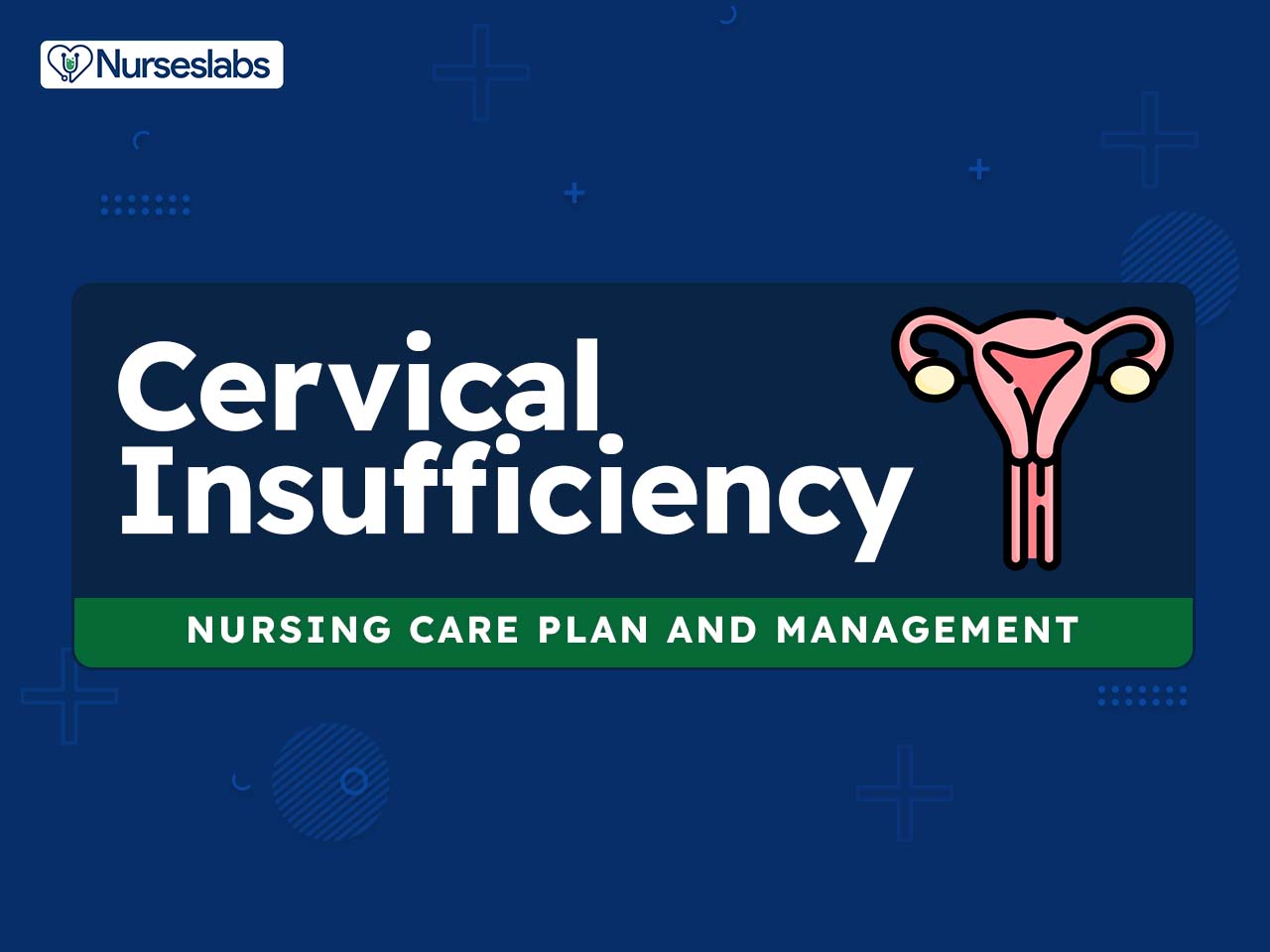
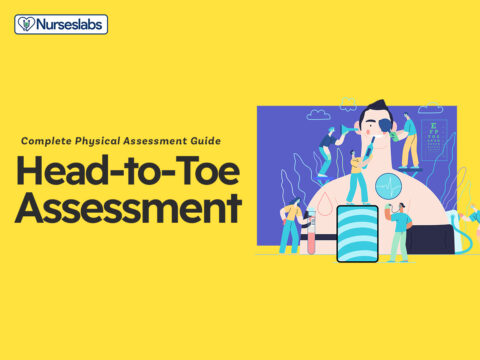
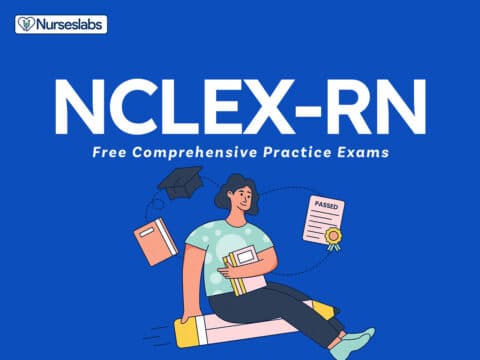
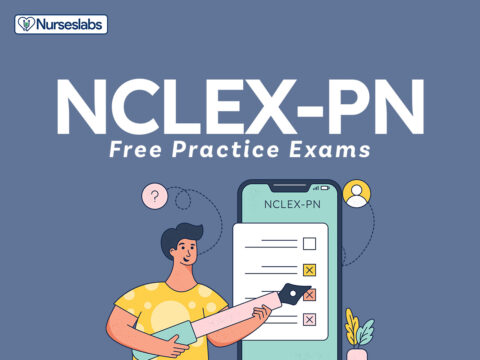
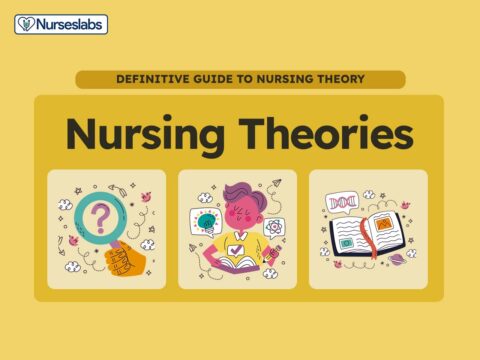




















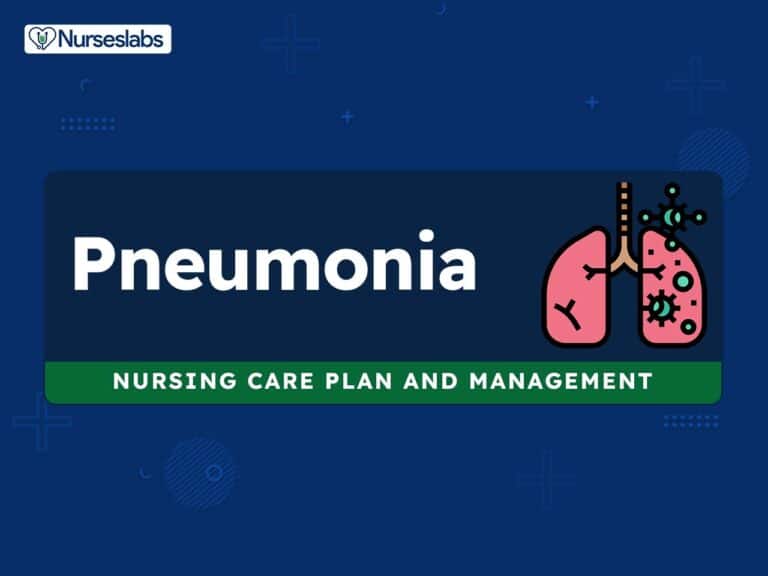
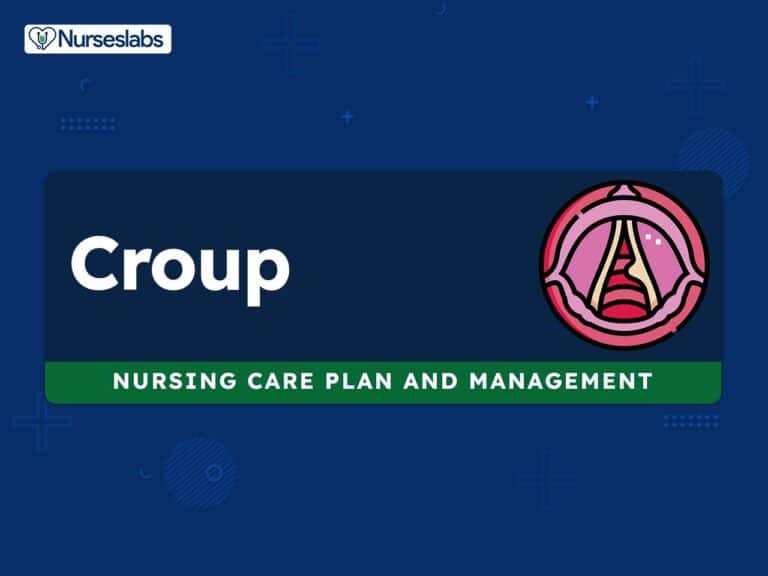
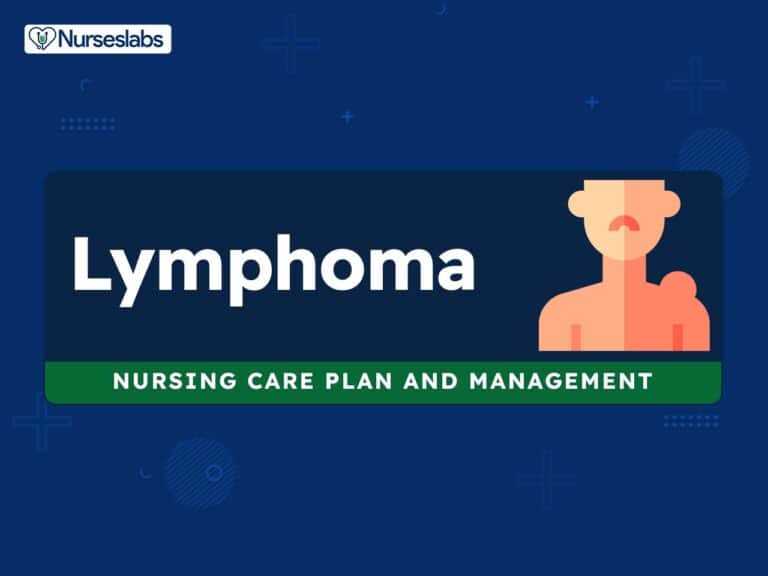
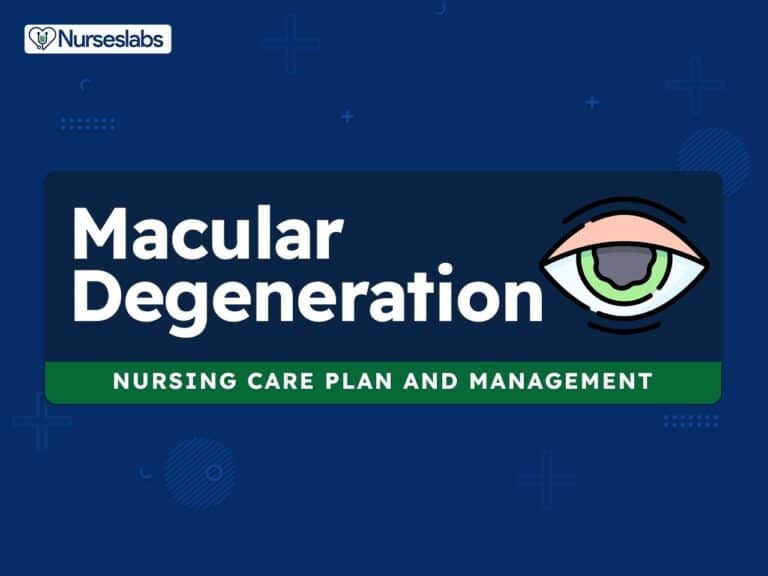
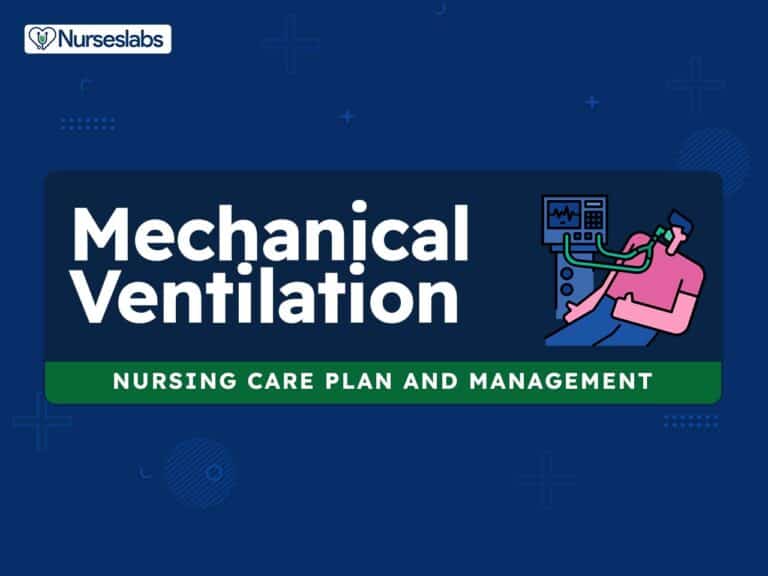
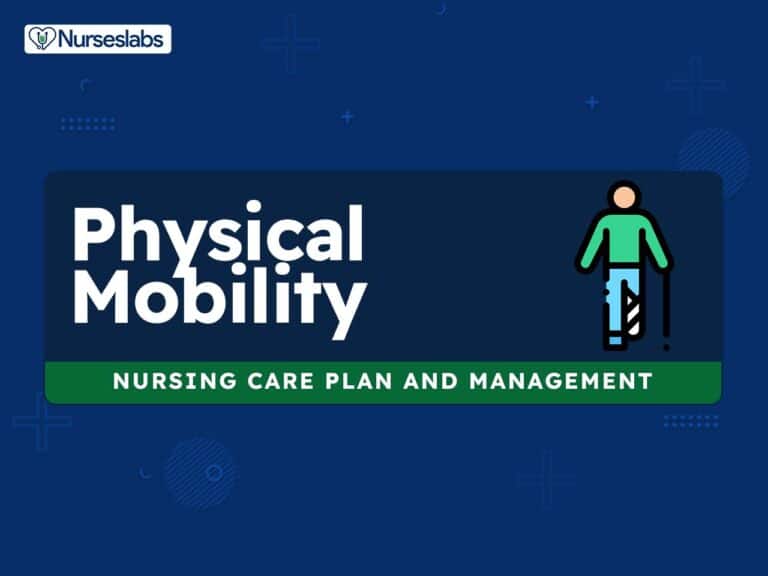
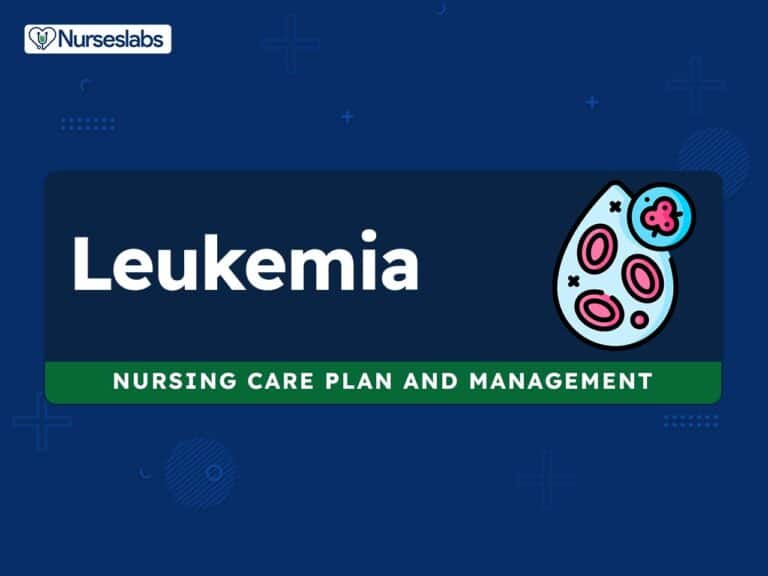
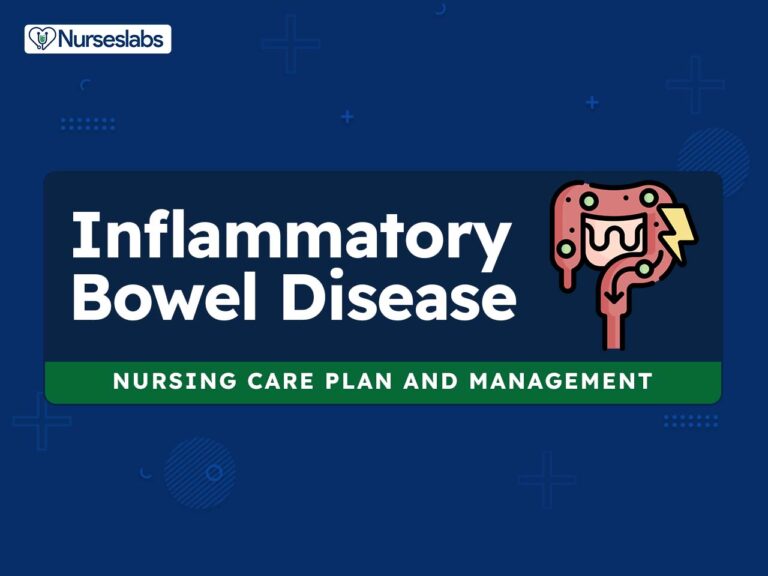
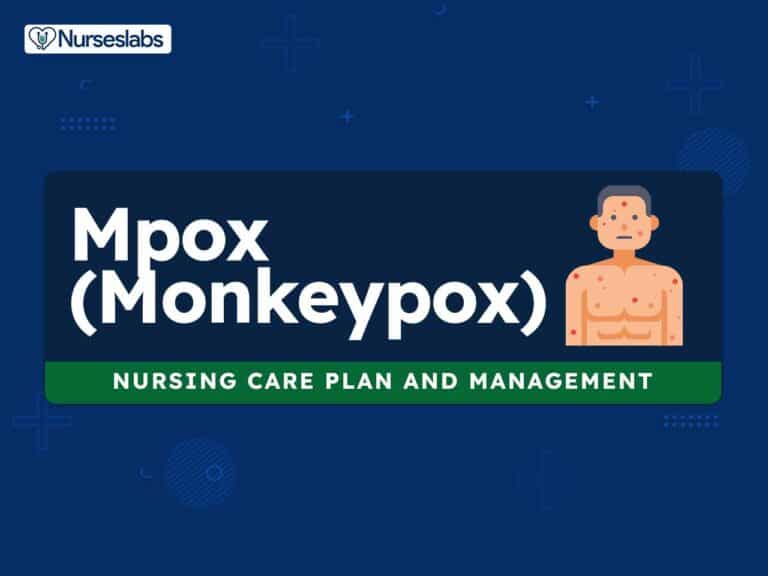
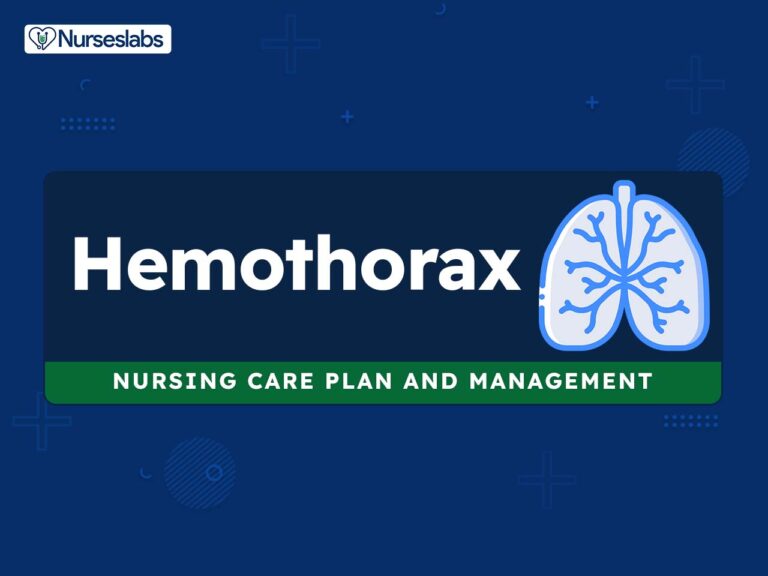

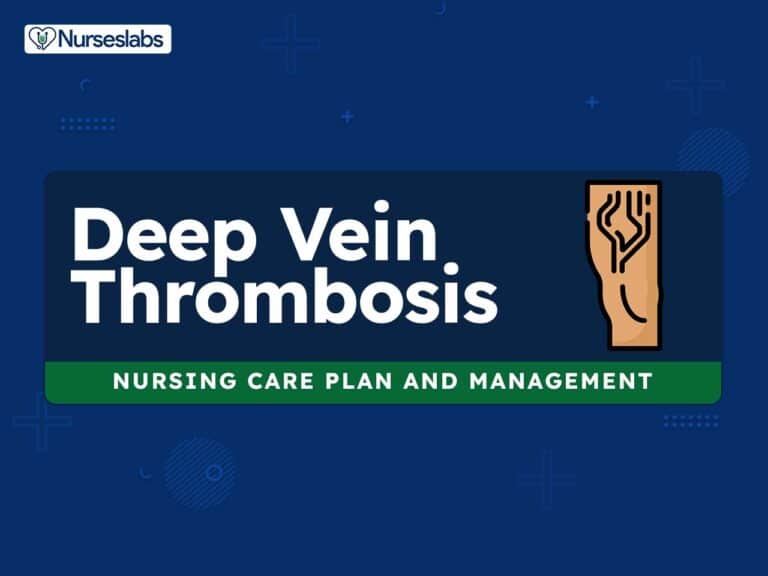
Leave a Comment